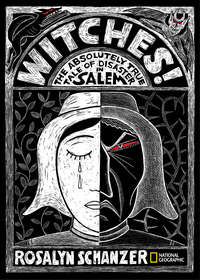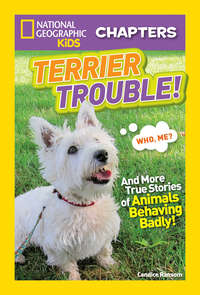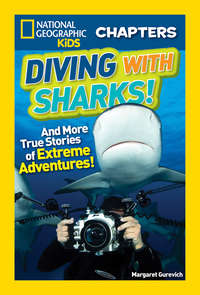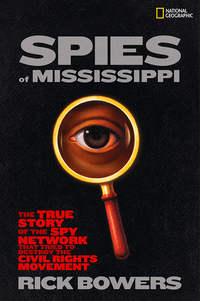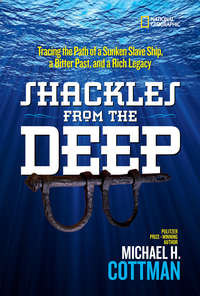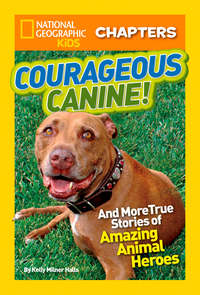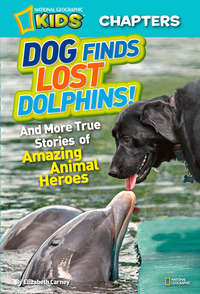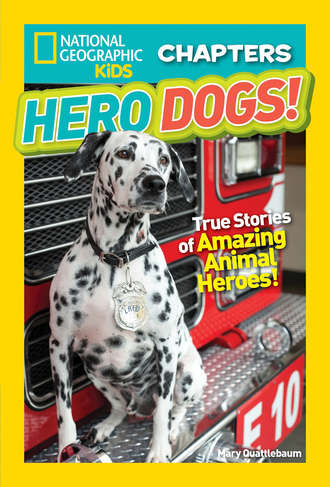
Полная версия
National Geographic Kids Chapters: Hero Dogs

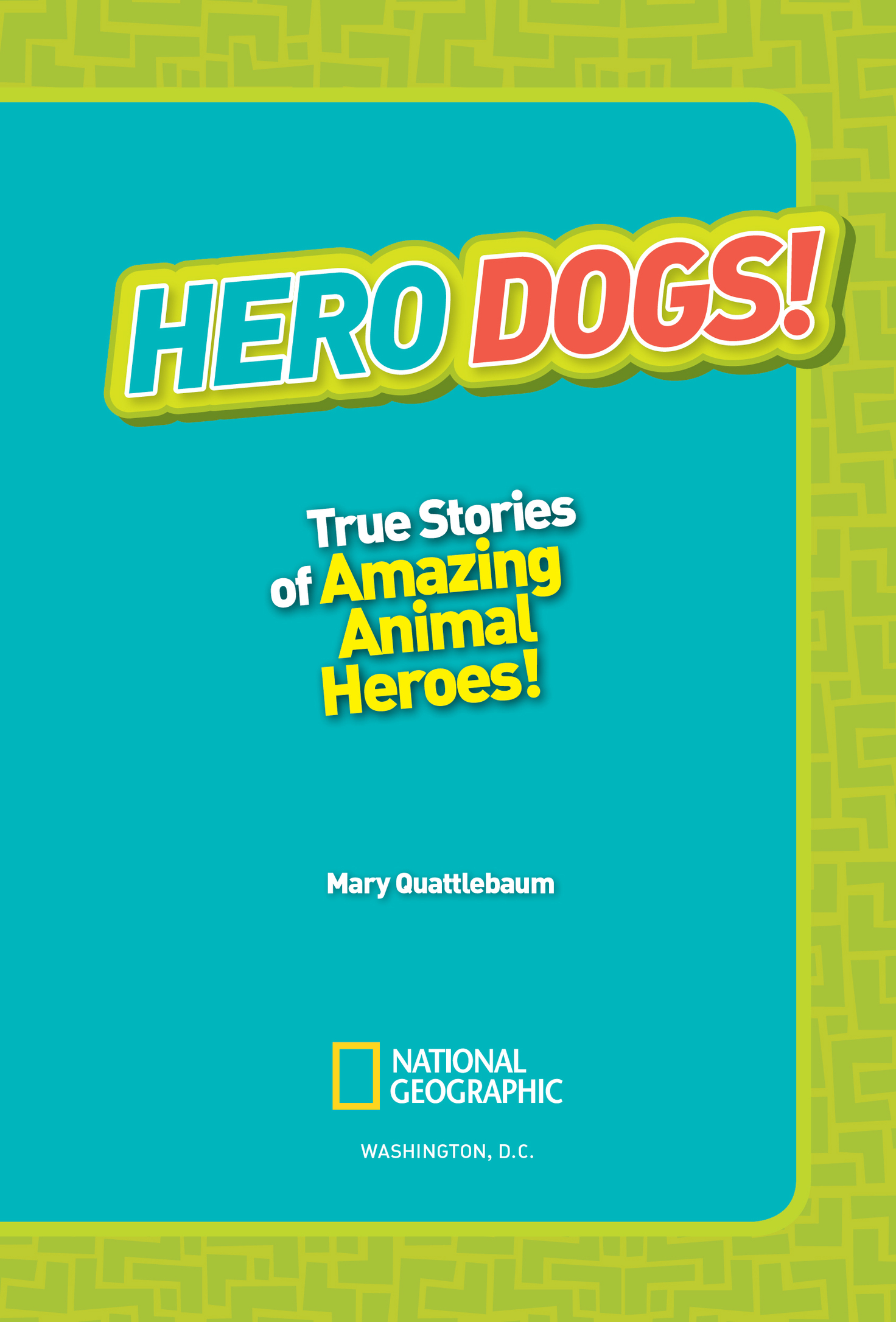

Copyright © 2017 National Geographic Partners, LLC
Published by National Geographic Partners, LLC.
All rights reserved. Reproduction of the whole or any part of the contents without written permission from the publisher is prohibited.
Since 1888, the National Geographic Society has funded more than 12,000 research, exploration, and preservation projects around the world. The Society receives funds from National Geographic Partners, LLC, funded in part by your purchase. A portion of the proceeds from this book supports this vital work. To learn more, visit natgeo.com/info.
NATIONAL GEOGRAPHIC and Yellow Border Design are trademarks of the National Geographic Society, used under license.
For more information, visit nationalgeographic.com, call 1-800-647-5463, or write to the following address:
National Geographic Partners
1145 17th Street N.W.
Washington, D.C. 20036-4688 U.S.A.
Visit us online at nationalgeographic.com/books
For librarians and teachers: ngchildrensbooks.org
More for kids from National Geographic: kids.nationalgeographic.com
For rights or permissions inquiries, please contact National Geographic Books Subsidiary Rights: bookrights@natgeo.com
Art directed by Sanjida Rashid
Designed by Ruth Ann Thompson
National Geographic supports K–12 educators with ELA Common Core Resources. Visit natgeoed.org/commoncore for more information.
Trade paperback ISBN 9781426328190
Reinforced library edition ISBN 9781426328206
Ebook ISBN 9781426328213
v4.1
Version: 2017-10-30


Cover
Title Page
Copyright
WILSHIRE: Protector of the People
Chapter 1: Pesky Pup
Chapter 2: Saving Lives
Chapter 3: Dog on the Go!
GLORY: Pet Detective!
Chapter 1: Finding Goldie!
Chapter 2: Cat Rescue
Chapter 3: Hooray for Heroes!
MOLLY AND COCO: Conservation Champs!
Chapter 1: Welcome Home!
Chapter 2: Busy Buddies
Chapter 3: Playtime
DON’T MISS!
Index
More Information
Credits
Dedication
Acknowledgments
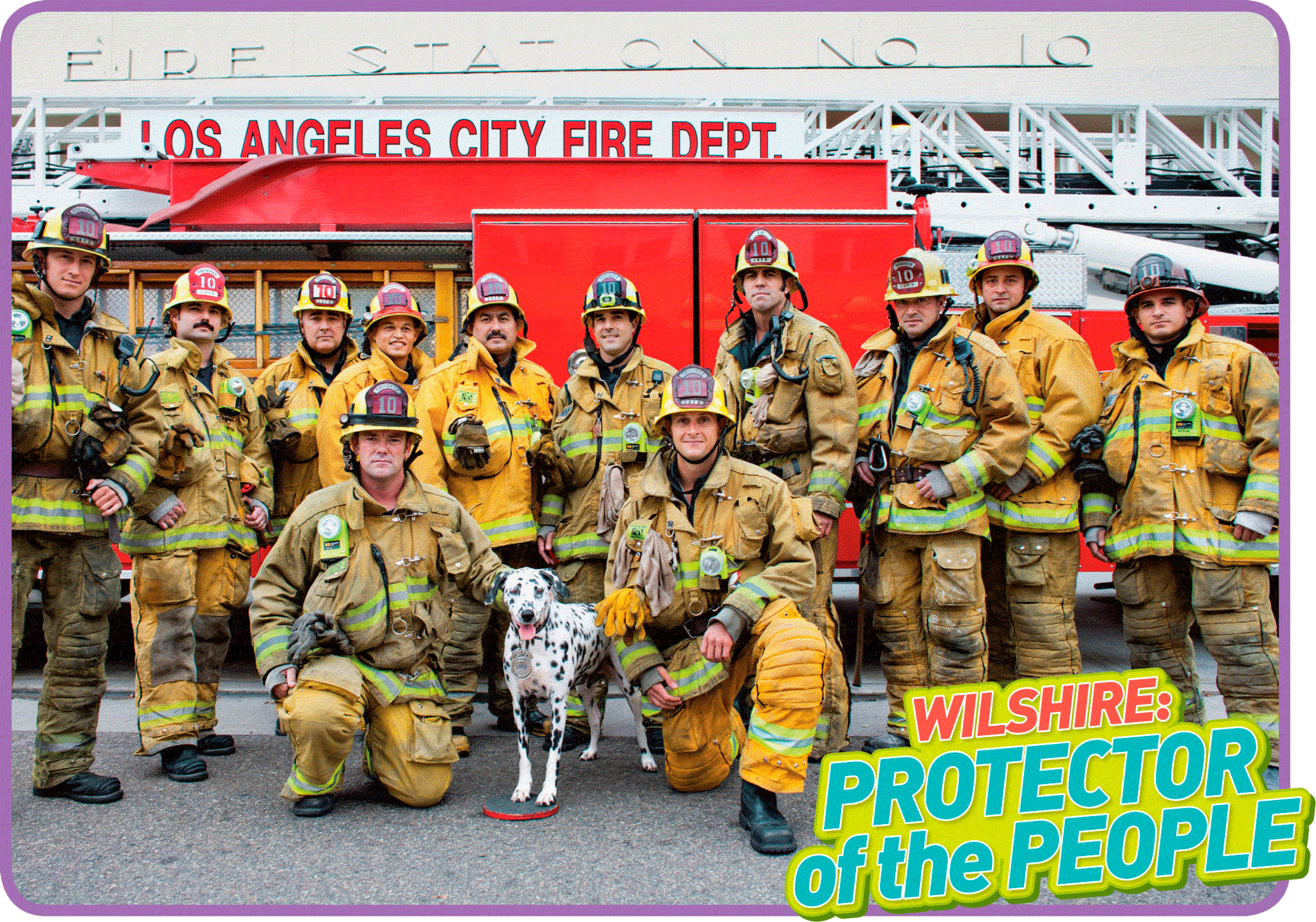

Wilshire and firefighters of the Los Angeles Fire Department. Credit 1
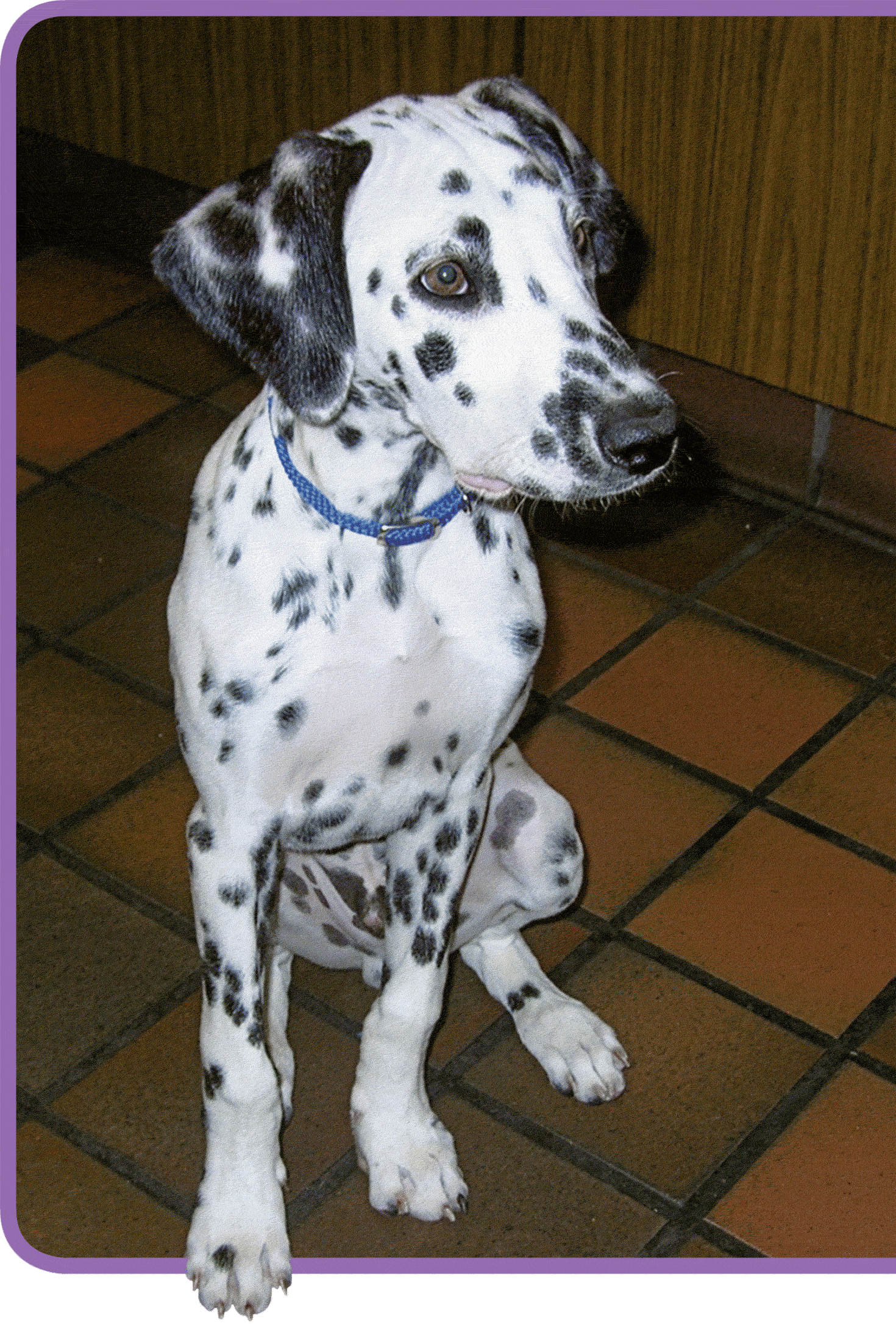

The mysterious pup Credit 2


Ryan Penrod looked down at the pup on the fire station’s doorstep. It was six o’clock on a March morning. He was about to start his shift at Fire Station 29 in Los Angeles, California, U.S.A. Where had the pup come from?
The pup looked up at Ryan. At that moment, he seemed to decide that Ryan was his new best friend. “Woof,” he said, wagging his tail.
The other firefighters filled Ryan in. The night before, a girl and her parents had come to the fire station on busy Wilshire (sounds like WILL-shur) Boulevard. She was crying because she had to give up her puppy. The owner of her apartment building said the puppy could no longer live there. He made too much noise! He barked and whined, and he disturbed the other people who lived in the building. The building’s owner said the girl had to find the pup a new home immediately. Or she had to take him to the animal shelter. The firefighters wanted to help. They voted to let the pup stay.
So that’s how the pup ended up at the fire station, and that’s how he got his name: Wilshire.
Wilshire had a new name and a home, but no one knew what to do with him. He barked and jumped and ran around. “He was very excited and confused,” said Ryan. Wilshire wasn’t used to noises, like bells and sirens. He wasn’t used to big fire trucks. And there were so many people! Sixteen firefighters, including Ryan, worked at the station at the same time.
Ryan began to take charge of the pup, which helped Wilshire to settle down. That night he slept in a dog bed beside Ryan’s bed at the fire station. He waited for Ryan to feed him the next day. But then he began to get into trouble. He snuck food from the firefighters’ table. He chewed on their boots. He slipped out the door and ran down the street.
Ryan knew Wilshire needed to be trained. The pup was four months old, and no one had taught him to “come” or “sit.” No one had set boundaries. Wilshire was a breed of dog called a Dalmatian (sounds like dal-MAY-shun). They are smart dogs. Ryan hoped Wilshire would learn quickly.
He emailed a famous dog expert named Cesar Millan and asked for help. Cesar came to the fire station, and he taught Wilshire many important lessons. He also trained Ryan and the other firefighters to be more aware of Wilshire’s needs.
Cesar said that only one person should be in charge of Wilshire, to avoid confusing the pup. Wilshire needed regular exercise. He needed to eat at regular times. He needed to learn to obey rules, like “do not sneak food” and “do not chew boots or equipment.”
Did You Know?
Dalmatians are white with many small spots that are either black or dark brown.
Wilshire learned from Cesar and so did Ryan. Cesar spoke in a firm, clear voice. He never yelled or lost his temper. He gave Wilshire treats for good behavior. He taught Wilshire rules to keep him safe and to help him to become a good member of the fire station team.
Ryan saw that Wilshire was becoming a relaxed, respectful dog. The pup was eager to work and obey. Maybe Wilshire could learn something else, something more complicated. Maybe Wilshire could learn how to help save lives.
There are many kinds of heroes, Ryan knew. Some heroes perform a single act of bravery. Perhaps they pull a drowning child from a lake or rescue an adult from a burning building. Others become heroes after a long period of time, like Martin Luther King, Jr., the great civil rights leader, or Florence Nightingale, a nurse. She tended to many sick and wounded people, and she started a school to train other nurses. Through their words and actions, heroes like King and Nightingale help to make the world a better, safer place.
Did You Know?
Dalmatian puppies are born with white coats. Their spots appear about a month later.
Ryan talked about his idea with Cesar. Cesar asked Clint Rowe to help. Clint has trained animals for movies and TV shows. He has trained many dogs. He even trained a bear once! Maybe Clint could help a spunky Dalmatian pup. Maybe he could teach Wilshire how to be a fire safety hero.
At the time, Cesar had a TV show about dog training and behavior. It was called Dog Whisperer. He asked Clint, Ryan, and Wilshire to be part of his show. Millions of people watched as Clint taught Wilshire and Ryan to work as a team.
Wilshire learned to act out many important fire safety tips. People loved watching the intelligent pup, but they were also learning something very important. They were learning what to do in case of a fire emergency. They were also learning how to prevent fires in the first place. Wilshire was only a puppy, but he was on his way to becoming a hero.


Credit 3


In the late 1600s, Dalmatians were popular “coach dogs.” When their owners traveled, the dogs trotted beside the carriages. They helped to soothe the horses and be on the lookout for robbers. Dalmatians were also used by firefighters in cities. They were like sirens! A Dalmatian would run ahead of the horse-drawn fire engine, barking. The engine’s red color and the dog’s loud barking were a warning: Out of the way! Fire ahead! As the firefighters dealt with the blaze, the dog would stay close to calm the horses. Today’s fire trucks don’t have horses, but many are still red. And sometimes, a Dalmatian rides proudly inside, often headed to a safety presentation rather than an actual fire.
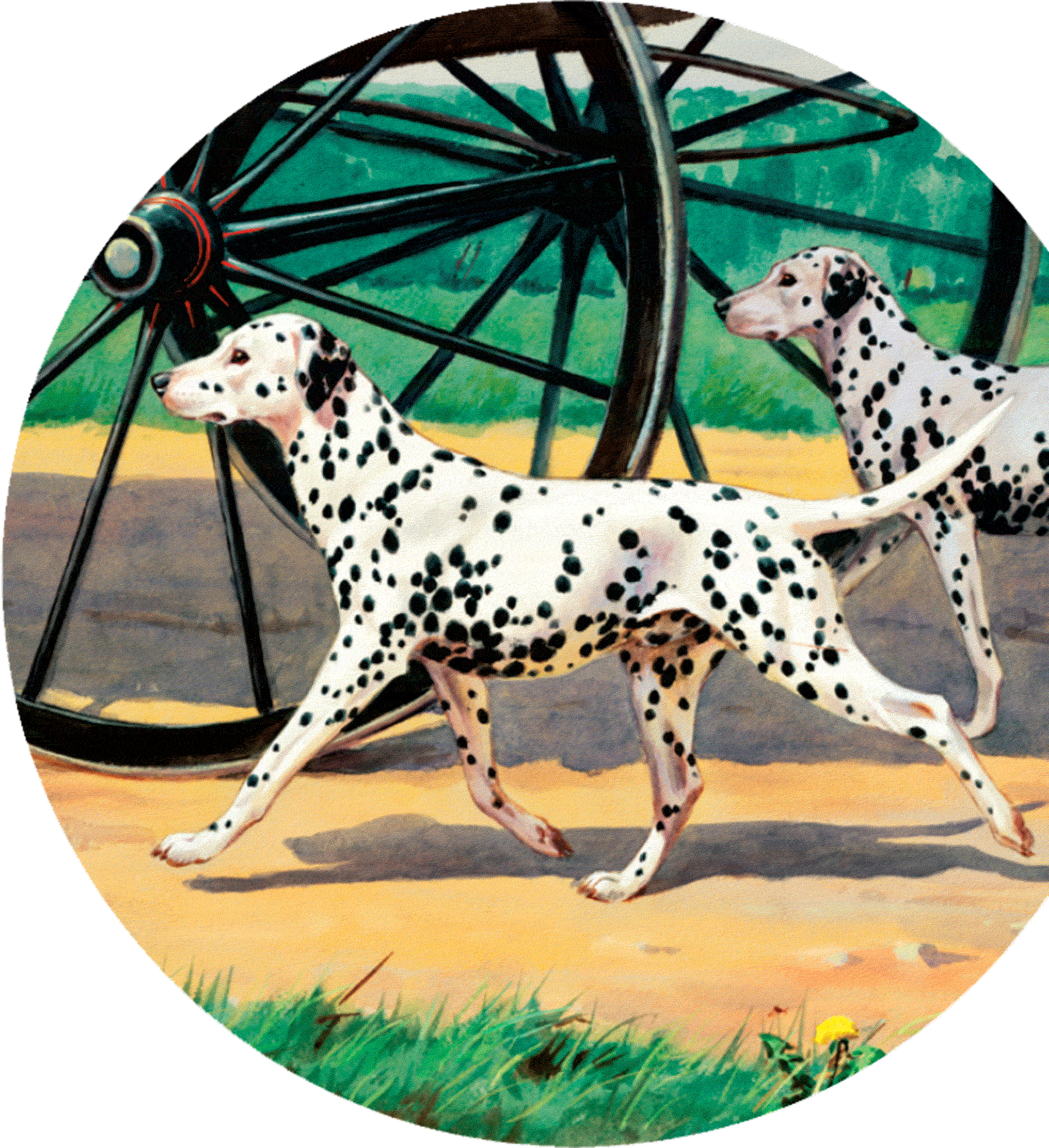

Credit 4
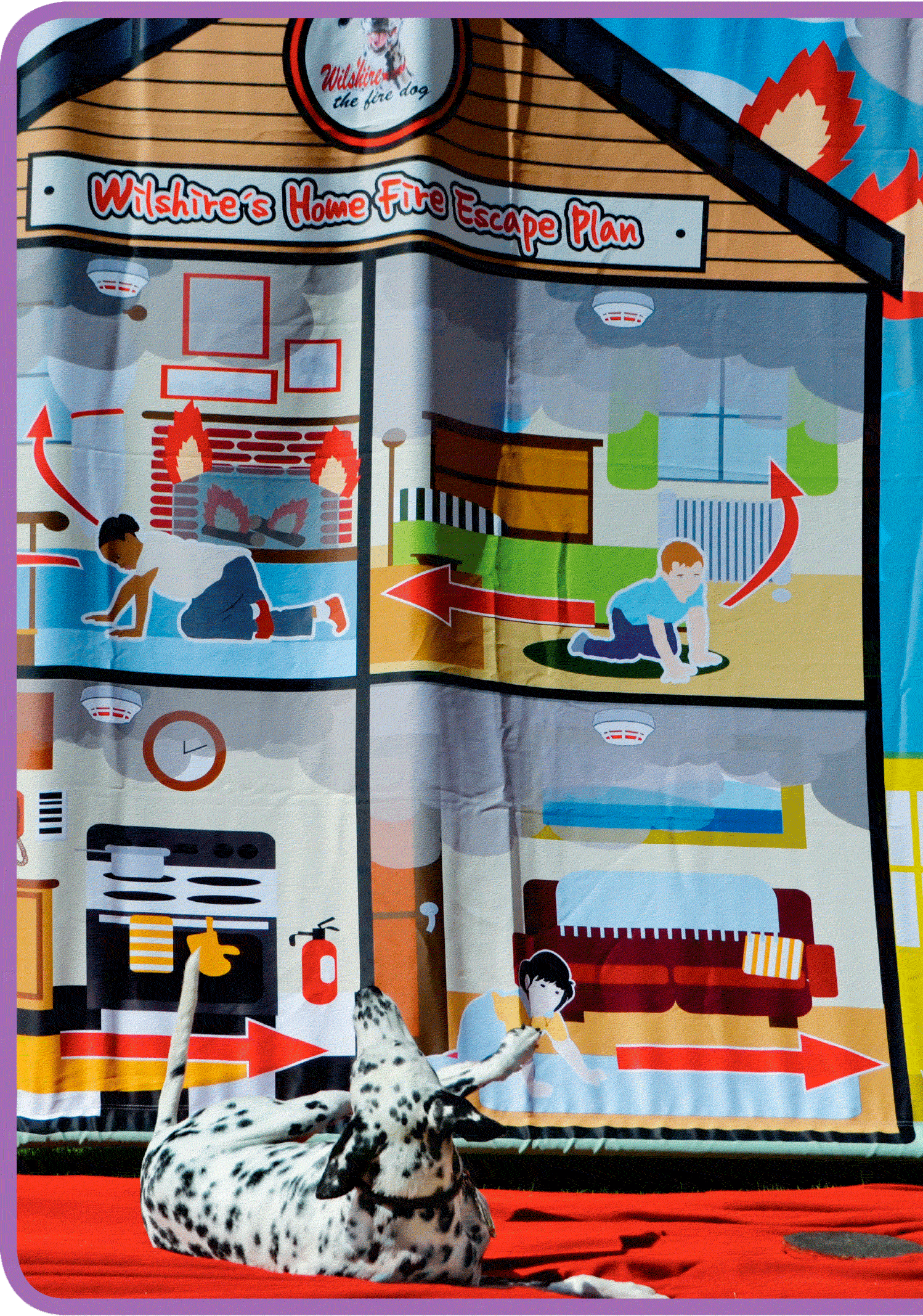

Wilshire shows kids how to stop, drop, and roll in case of a fire. Credit 5
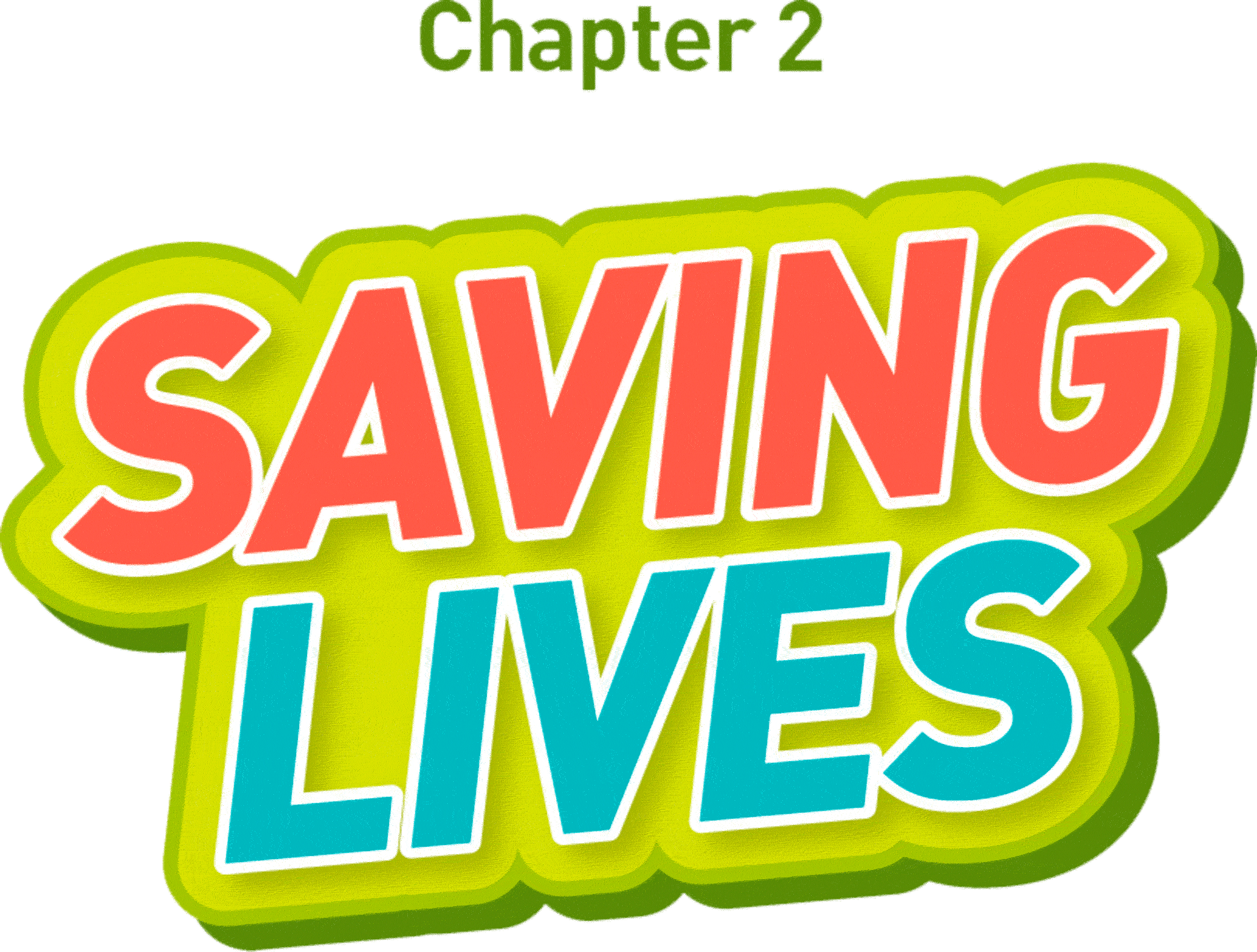

It was a sunny day at a park in Los Angeles. Children clapped as they watched Wilshire. Adults talked and smiled. There were many distractions. But Wilshire stayed focused on his important work. He and Ryan were doing their special show on fire and life safety. Ryan put some props on the stage, and Wilshire was ready. He knew what to do with each one.
Wilshire obeyed each of Ryan’s verbal commands. Wilshire activated a smoke alarm. He crawled under a wooden model of a fire to show the crowd how to “get low and go” in case of a fire. He pressed the buttons on a phone with his nose to show how to dial 911. That is an important phone number to remember for any emergency.
People were amazed at Wilshire’s next trick. They watched as the spotted dog suddenly stopped moving and stood very still. He then dropped to the ground, stretched out, and rolled. He was showing the crowd what to do if their clothes caught on fire. Stop, drop, and roll!
Everyone clapped. After the show, the children got into a long line. They wanted to pat Wilshire and take a photo with him. They wanted to look closely at his silver firefighter badge. Wilshire wanted to meet them, too. He wagged his tail as he greeted each child.
Did You Know?
A grown male Dalmatian weighs about 50 pounds (23 kg) and stands about 24 inches (60 cm) high. Females are slightly smaller.
Ryan knows that Wilshire is a good teacher. He helps kids remember important safety tips. It’s easy to forget when you read something, but when a dog shows you each tip, it stays in your mind.
“Wilshire’s presentation is fun,” said Ryan. “Kids love watching and learning from him.”
Wilshire often helps Ryan teach health and fitness, too. If people eat unhealthy foods and don’t get enough exercise, they may become overweight. Then they may suffer from health problems. Wilshire eats some fruits and vegetables to show how to make healthy food choices. He lifts a pretend barbell, or weight, to show the importance of working out. Ryan tells people that Wilshire runs on a treadmill at the fire station for 20 to 30 minutes a day. He exercises every morning with his firefighter friends. Go, Wilshire!
Did You Know?
The National Fire Protection Association uses a cartoon Dalmatian named Sparky to help people learn about fire safety.
Although Wilshire usually doesn’t help to fight the fires, he likes to travel in the fire truck, says Ryan. “What dog wouldn’t love a ride with lights flashing and sirens blaring and the wind in his face?”
Once, Wilshire and Ryan were coming back from giving a talk at a school. Suddenly, their truck got a call. There was a fire! The firefighters quickly put on their gear as the truck raced to the scene.
“When we arrived,” said Ryan, “we saw smoke coming from the building.” They jumped off the fire truck, grabbing ladders, tools, and the hoses needed to put the fire out.
Wilshire stayed in the truck with the windows rolled up. “He was barking like crazy,” said Ryan. He wanted to help!
Ryan and the other firefighters put out a fire on a stove in one of the apartments. No one was hurt. The smoke alarms had warned everyone to leave the building.
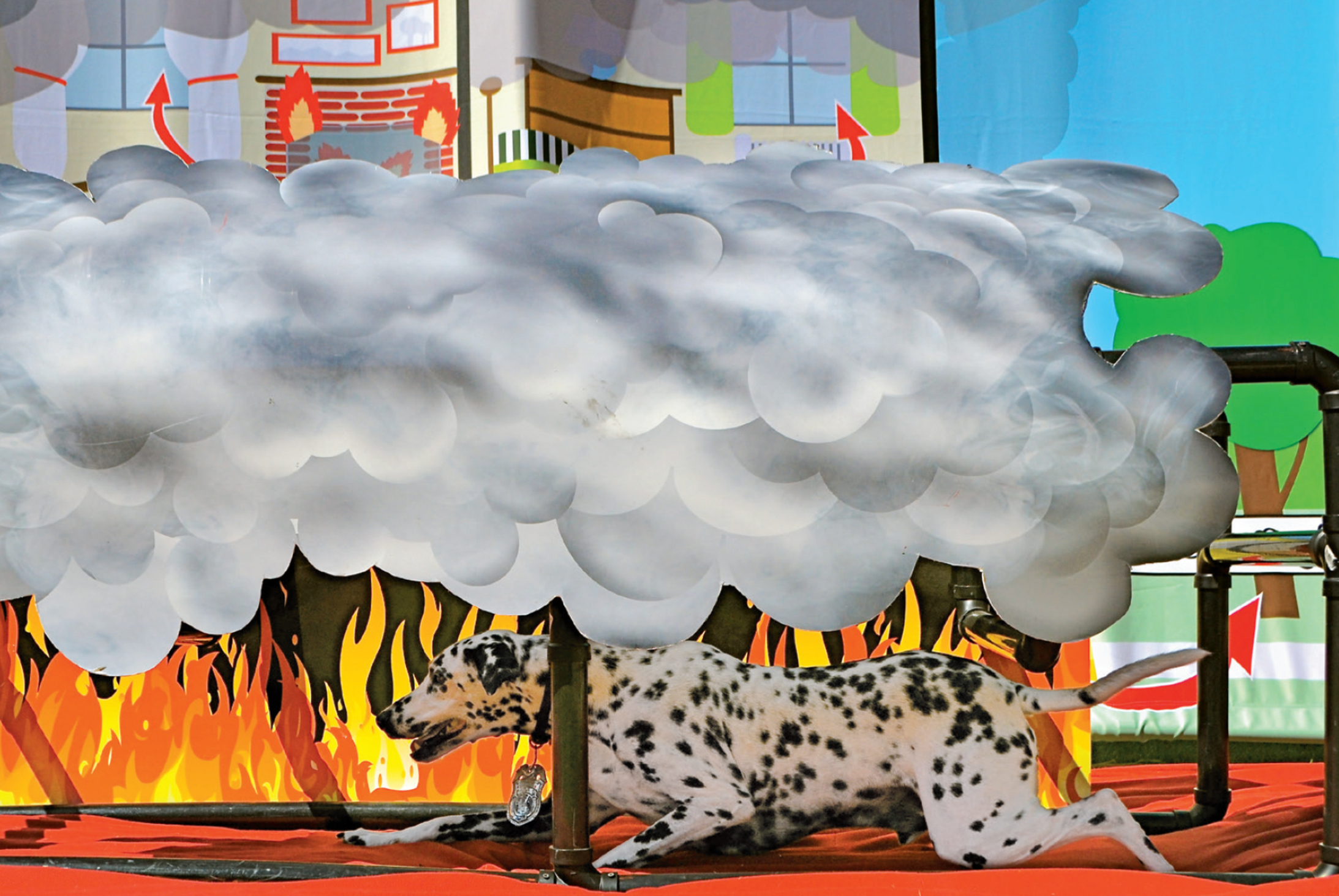

Credit 6


• Make a plan with your family. Figure out a good escape route in case of a fire. Pick a safe meeting place outside so that the whole family can meet there. Make sure that pets have a way out, too.
• Practice your plan. Have fire drills twice a year.
• Check smoke alarms every month to make sure they work.
• In case of a fire, “get low and go.” To avoid breathing smoke, crawl on your stomach so that you are close to the floor where the air is cool and clean.
• Know how to call emergency services.
• Never run if your clothes catch fire. That causes the fire to grow. Instead, remember: Stop, drop, and roll. Stop and cover your face with your hands; drop to the ground; lie flat and roll. This helps to put the fire out.
• Place a pet-alert sticker in your window. List the type and number of pets in your home. This helps rescue workers find and rescue your pets in an emergency.
The family with the fire was okay, but the children were scared. Their apartment was still filled with smoke. While it cleared, they waited outside. This was Wilshire’s chance to help. Ryan brought the friendly dog over to visit. Wilshire helped the children feel calmer.
“They seemed to quickly forget about their fear,” said Ryan. “They laughed a little when Wilshire wagged his tail and licked their faces.”
To help people learn about fire safety, Wilshire and Ryan have traveled throughout Los Angeles and to other parts of the United States. They have visited schools and a children’s hospital. They performed for the patients there. Wilshire has also been on the news. Wilshire has even performed in local plays as a guest star. He played the dog characters in Annie and Peter Pan and Tinker Bell—A Pirates Christmas.
Wherever he goes, Wilshire shares his fire safety tips. Wilshire is also a good reminder. He shows that adopting a dog can help give that pooch a second chance. Millions of people have seen and learned from Wilshire.
Everyone should know about fire safety because this knowledge can save people’s lives.
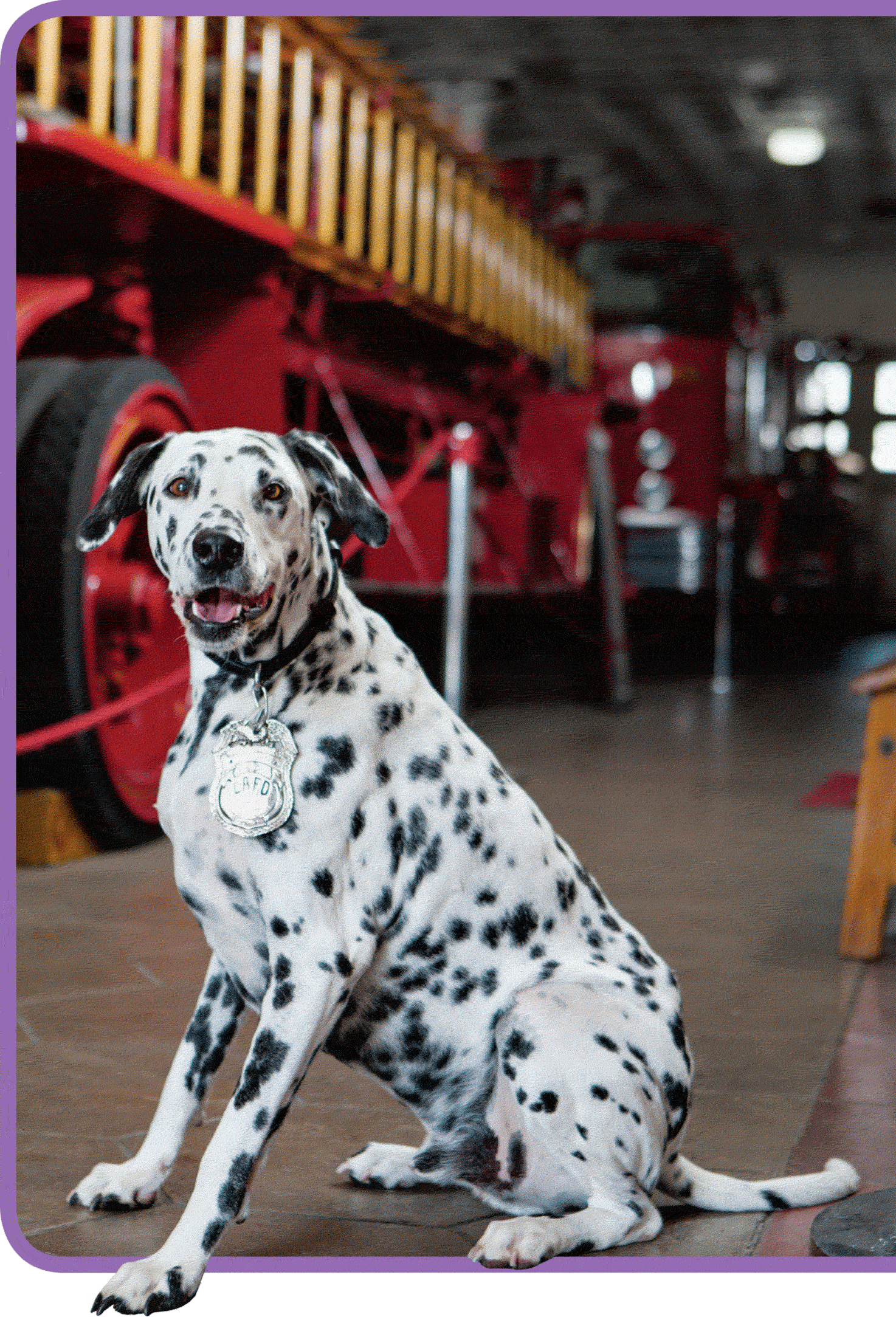

Wilshire at the fire station, wearing his badge Credit 7


At the fire station, the day begins early for Wilshire and the other firefighters. He is fed every morning at 5:45. He helps to check the safety equipment to make sure everything is working. Firefighters must get ready quickly—within 60 seconds—when there is an emergency. They don’t have time to look for or check their equipment at that point.
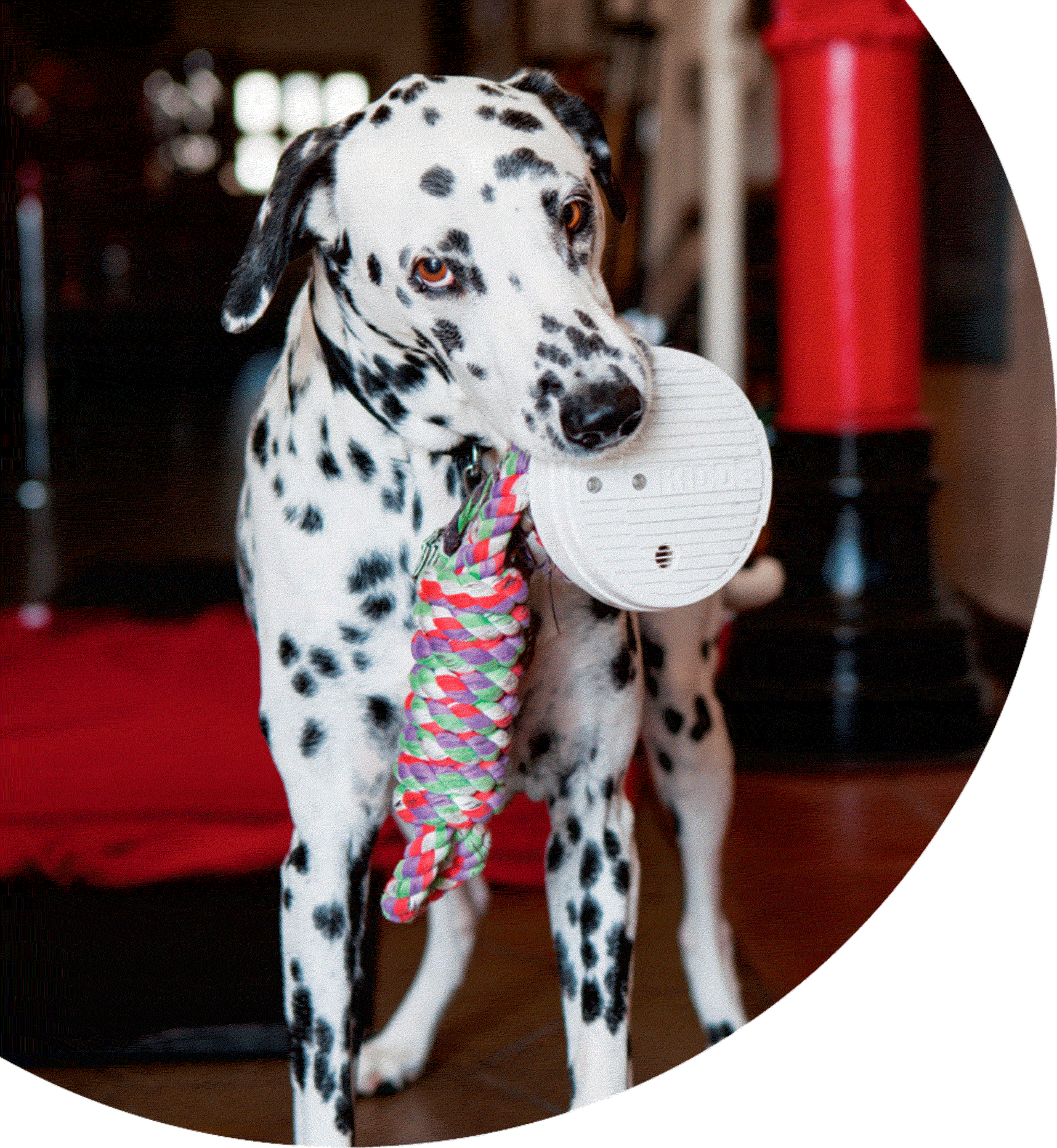

Credit 8
When they are working, firefighters also eat and sleep at the station. That way, they can respond to emergencies at any time of the day or night.
Конец ознакомительного фрагмента.
Текст предоставлен ООО «ЛитРес».
Прочитайте эту книгу целиком, купив полную легальную версию на ЛитРес.
Безопасно оплатить книгу можно банковской картой Visa, MasterCard, Maestro, со счета мобильного телефона, с платежного терминала, в салоне МТС или Связной, через PayPal, WebMoney, Яндекс.Деньги, QIWI Кошелек, бонусными картами или другим удобным Вам способом.


